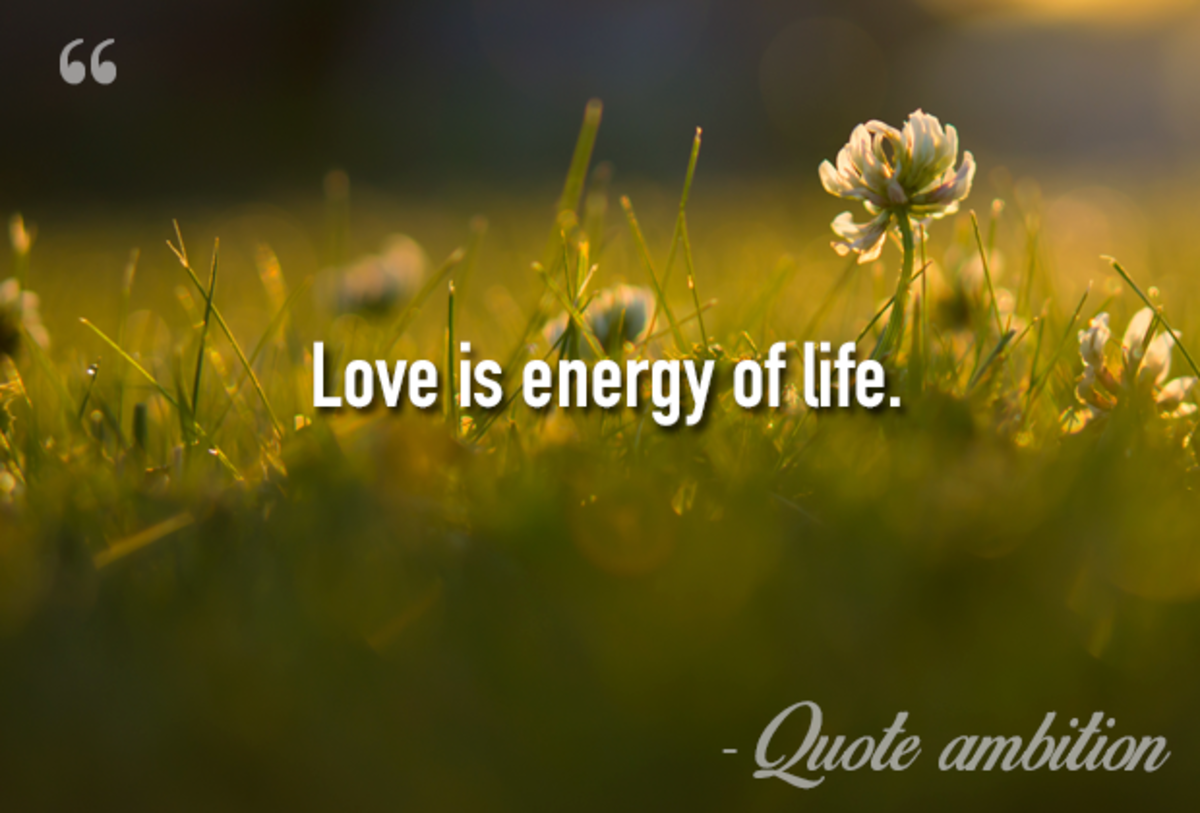Sustainable Success: How To Embrace Complexity & Create What Truly Matters

Crafting A Rich, Simple Yet Successful and Sustainable Life
"I would not give a fig for the simplicity on this side of complexity. But I would give my life for the simplicity on the other side of complexity." — Oliver Wendell Holmes
In life, and in work and business, simplicity is not about getting rid of what you don't want, it is about creating what you truly do want. It's about the success that comes from working through life's messy complexity to the simplicity on the other side of that complexity.
Every few years, for example, new approaches to clearing out clutter are promoted as a starting place for simplifying your life or work. New books, articles, and Internet lists have given clutter-clearing much space and attention.
But, is it deserved?
Simplifying, I believe, involves much more than merely getting rid of the clutter in your home, mind, or business.
Although clearing clutter and getting rid of what you don't like can be a good start, real and lasting simplicity comes from developing the capacity to create—to bring into being—what we truly do want in our lives, work, and businesses.
Beyond Clutter Clearing
Duane Elgin, author of Voluntary Simplicity put it, "To simplify is to bring order, clarity and purpose into our lives. It is not a path of 'no-grow' but a path of 'new growth'."
Simplifying, then, is about consciously creating what matters to us, while gently letting what does not matter fall away.
When I first began to simplify, I thought I had to give up conventional success and much of what I valued about it (challenge, engagement, adventure, achievement, etc...). So, I focused on making my life as minimal as I could, even austere.
I lived in tipis and rustic cabins during the summer. I joined a small co-op of simple livers, and shared a house through the winters, living on $400 a month. But, although my life was simple and uncluttered, it did not satisfy me. I had made it too simple. Along with the clutter of material stuff, I had also rid myself much of what I valued about success in my life and work.
I tried to swing back towards success, hoping to reclaim values such as challenge and engagement, But, as I did, my life got complicated again. The stress of striving for traditional success (I taught teachers at a University) took its toll on me. To relieve my stress and the anxiety it brought on, I bought stuff. I purchased books, records, shirts, take-out pizza, and more books. Clutter crept back into my home, and into my mind. Frustrated, I thought, darn,now I have to simplify it all again.
For years, I swung back and forth between working on simplicity and working on success. That oscillation left me feeling confused, and often lost. Something, I thought, must be missing from my approach. But, what?
Overcoming Oscillation; Creating Successful Simplicity
Through experience and reflection, and help from mentors such as Robert Fritz and Vicki Robin, I finally learned to simplify in a way that leads to real and lasting results.
I realized that my oscillating beahvior was influenced by underlying life structures that I didn't know existed. This structure, I found, was created by they way I had arranged the key elements of my life — vision, values, desires, thoughts, ideas, beliefs, fears, doubts, aspirations, and my perception of day-to-day reality—in relation to each other.
The notion of "structure" frightens many. But, it shouldn't. Everything in our life and world is structured. Some structures enable; the work for you. Some structures restrict; they work against you.
A ladder is an enabling structure. It makes it much easier to climb up to your roof to make repairs. A bicycle is an excellent enabling structure for getting places, cheaply. A garden is an enabling structure for growing your own food.
The power of a structure to enable lies largley in the arrangement of the structure--in how the pieces and parts are arranged relative to each oher. If you arrange the parts of a bicycle in one way, it will take you where you want to go. If you put them together in a different way, it won't work. It won't take you whre you want to go. It's the same with the structures than unerly our lives.
As I became aware of my own underlying structure, and of my part in creating it, I understood why I shifted back and forth between simplicity and success, rather than creating both. I had put together my key values in a way—a structure—in which they competed, even conflicted, with each other.
For example, I wanted a simple, healthy, and sustainable life. But, I also wanted "a good life" complete with challenging work, financial security, comfort, convenience, status, and respect.
Without knowing it, I'd arranged my two values into a dichotomy of desires— a structure that pitted my desire for a simple, sustainable life against my desire for a rich, engaging, and successful one.
In this simplicity vs. success framework, my values collided. "Vision collision," on of my clients later called it. My attempts to satisfy one desire increased the pull of the other desire. Focusing on the second value increased the tug of the first value. Caught in an oscillating pattern set up by my deep structure, I swung back and forth in frustraton.
As I tried to get rid of my frustration, and the complexity it generated, I lost sight of the real results that I truly wanted to create. Each day, I edged a little further away from the simple yet successful life I longed for.
It was a great day when I realized that there were two forms of simplicity. Voluntary simplicity is freely chosen, and can be very satsifying. But involuntary simplicity is just another word for poverty.
At about the same time, I also realized there were two forms of complexity.
Embracing Complexity Can Lead To Real Simplicity
Driven by unwanted problems and adverse circumstances, involuntary complexity leads to distraction, stress, and anxiety. Just getting rid of (or getting relief from) what you don't like and don't want — clearing clutter, for example — can waste your precious life energy.
Too often, this approach results in the reactive, temporary, and usually simplistic simplicity that is found on this side of complexity. Clearing clutter brings relief, but, by itself, does not create the results we long for.
Your life will be simpler and more successful if you embrace complexity in your life, and then rise above it by creating what truly matters to you. "Find what you really care about," sang Kate Wolf, "and create a life that shows it."
It is not necessarily easy to create the life you long for. It is often a complex adventure. But, as I learned, complexity doesn't have to be confusing or stressful. Complexity in a novel, for example, makes it appealing. Complex conversations are interesting, and engaging. The complexity of flavors in fine wine is what makes it interesting.
Voluntary complexity is freely chosen. And focused. A potter throwing a delicate pot is voluntarily embracing complexity. So is a writer crafting a nearly perfect poem, or an entrepreneur growing a socially responsible business. They all encounter complexity, but, because they match that complexity with their own complexity (created by combining skills, talent, practice, and learning) they bring a focused simplicity to their tasks, and to their lives. And in doing so, they experience the simplicity on the other side of complexity.They flow!
Simplicity seekers who see life's complexity as the raw material out of which they create their live can more easily transcend that complexity. By approaching their lives in such an open way, they more easily create the true, lasting, and fulfilling simplicity they so deeply long for. By embracing, and working their way through the complexity to create what matters to them, they can go beyond that complexity in favour of simple, sustainable success.
If your clutter clearing, for example, is driven by your vision of a well-designed home workspace or writing nook— because you'd love to have such a space in your home, and your life— the space you create will be clutter free. And it wil be much more likely to stay that way.
Although creating a home work space or writing nook is more complex than clearing clutter, it also engages you more. A clear, compelling vision of a writing nook that you'd love to create not only energizes and motivates you. It also guides your daily actions. It helps generate the momentum you need to overcome adversity, and to follow through to completion.
But vision doesn't do it all by itself. To create what matters to you, you need to ground your visions in accurate, objective assessments of the current state of your result. And, you need to see current reality, not as a problem to solve but simply as the raw material out of which you will create the result.
Creating What Matters Most
Out of the gap between your vision and your current reality, a useful and dynamic tension emerges. This creative tension is the engine of creating. It generates the energy required to take actions in support of your desired result. By orchestrating the resolution of creative tension in the direction of your visions, you gradually change your reality to reflect that vision.
Focusing on a vision of a result you want, while embracing reality as it is, sets up a container for creativity that guides your actions toward your results. Working with creative tension is muh less stressful than fighting against clutter. By following the path of least resistance that forms between vision and reality, you naturally and easily flow toward what you want.
"Making the simple complicated is commonplace," said jazz great Charlie Mingus, "makes the complicated simple, awesomly simple, that's creativity."
As my focus shifted to creating what I truly cared about, something amazing happened. Not only was I better able to create the results I wanted, but my problems began to fade away. Psychologist Carl Jung explained this phenomena when he wrote, "All the greatest and important problems of life are fundamentally insoluble ... They can never be solved, but only outgrown."
Real change, Jung had observed, resulted from a shift to a higher level of consciousness. When his patients embraced a more powerful interest, he explained, "the insoluble problem lost its urgency. It was not solved logically in its own terms but faded when confronted with a new and stronger life urge."
By adopting a creating stance -- simultaneously focusing on what matters and embracing reality -- simplicity seekers can generate a new and stronger life urge. They can shift to a higher level of consciousness. In doing so, they tap into one of life's most powerful urges: the drive to create.
"The drive to create," wrote violinist and author Stephen Nachmanovitch in Free Play: Improvisation In Life and Art, "characterizes someone who is driven to do something from the depths, something that he or she feel must be done regardless of whether it's popular or well rewarded by society."
"Creating" is similar, but in many ways different from what most of us think of as "creativity." Creativity is often no more than just doing old things in new ways. But, in the creating stance, the drive comes from a clear and compelling vision of a deeply desired result.
"This inner compulsion to realize a vision," continues Nachmonovitch, depends on creativity for its fulfillment, but it is not the same as creativity. The inspired poet or musician may in fact be less creative, less clever, adept, or original than the designer of an advertising campaign, but he is motivated by a life-or-death need to bring the vision into being."
Embracing Complexity; Creating Simplicity AND Success
Focusing on a vision of what matters can help you cut through messiness and involuntary complexity. It simplifies and integrates your actions and energy. Much like a laser coheres light into a powerful, penetrating force, vision, when held in creative tension with current reality, coheres your life structure into a powerful, persistent force for creating what truly matters to you.
Creating, freely chosen, is simpler yet more powerful than problem solving. The structure of creating can embrace and transcends problems. But problem solving that embraces creativity is still just problem solving. Thus, creating is a more reliable and effective structure in which to create real and lasting results.
The great and enduring results on which our civilization rests (art, music, architetcture, literature, science, etc...) were not merely solutions to problems. They were creations that someone loved enough to bring into being
"All the great things," said the poet Robert Frost, "are done for their own sake."
So, by tightening my focus on the great things I wanted to create—a sustainable life that included both simplicity and success—I was able to embrace complexity, and better create what mattered to me.
By embracing my competing desires, and focusing on the sustainable life I truly want to create I I have made great progress toward creating the simple, successful, and sustainable life and work I long for.
What about you? What do you long for? What do you feel driven to create?
Embrace it, and your life will become simpler and more fulfilling!
------------









